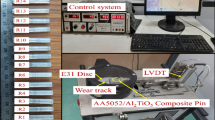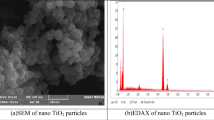Abstract
The purpose of this work was to determine the toughening mechanisms in interlayered quasi-isotropic glass–fibre reinforced polyester resin (GFRP) composites. Particles of polyethylene and aluminium tri-hydrate, Al(OH)3, were mixed with the polyester resin prior to laminating with woven E-glass-fibre cloth. Mode-I, mode-II, and impact tests were performed to determine critical strain energy-release rates (GIc and GIIc), absorbed energy and residual compressive strength for the laminates with and without particulate additions. Mode-I and mode-II delamination toughness were characterized using double cantilever beam (DCB) and end-notched flexure (ENF) specimens, respectively, and the delaminated surfaces of specimens were examined using scanning electron microscopy (SEM) to investigate the interlaminar morphology after fracture. The results indicate that the interlaminar toughness (GIc and GIIc), absorbed energy and residual compressive strength values of the GFRP composite increases with increase of particle content. The improved behaviour of particle containing GFRP is linked to stress-concentration induced plastic deformation and crack bridging. Polyethylene particles increase the toughness of the matrix material, which results in composites with higher values of mode-I, mode-II and impact than the composites with aluminium tri-hydrate particles. © 1998 Chapman & Hall
Similar content being viewed by others
References
D. Hull and Y. Shi Comp. Struct. 23 (1993) 99.
S. P. Joshi and C. T. Sun, J. Comp. Mater. 19 (1985) 51.
M. R. Goleau, Y. B. Shi, A. F. Yee, J. L. Bertram, H. J. Sue and P. C. Yang, Comp. Sci. Technol. 56 (1996) 1223.
G. Zhou, Comp. Struct. 35 (1996) 171.
J. C. Prichard and P. J. Hogg, Composites 21 (1990) 503.
S. L. Bazhenov, ibid. 26 (1995) 125.
N. Sela and O. Ishai ibid. 20 (1989) 423.
H. J. Sue, J. E. Jones and E. I. Garcia-Meitin, J. Mater. Sci. 28 (1993) 6381.
T. W. H. Wang and F. D. Blum ibid. 31 (1996) 5231.
V. K. Srivastava and B. Harris ibid. 29 (1994) 548.
J. Master, in Proceedings of the 6th International Conference on Composite Materials, vol. 3, (Elsevier, London, 1987) p. 396.
H. Recker, SAMPE J 26 (1990) 73.
A. Aksoy and L. A. Carlsson, Engng Fract. Mech. 39 (1991) 525.
J. M. Whitney, C. E. Browning and W. Hoogsteden, J. Reinf. Plast. Comp. 1 (1982) 297.
A. J. Russell and K. N. Street, In “Delamination and debonding of materials,” ASTM STP 876 (American Society for Testing and Materials, Philadelphia. PA, 1985) p. 349.
M. Hou, L. Ye and Y. B. Mai, J. Reinf. Plast. Comp. 15 (1996) 1117.
F. J. Guild, P. J. Hogg and J. C. Prichard, Composites 24 (1993) 333.
Author information
Authors and Affiliations
Rights and permissions
About this article
Cite this article
Srivastava, V.K., Hogg, P.J. Damage performance of particles filled quasi-isotropic glass–fibre reinforced polyester resin composites. Journal of Materials Science 33, 1119–1128 (1998). https://doi.org/10.1023/A:1004353020894
Issue Date:
DOI: https://doi.org/10.1023/A:1004353020894




